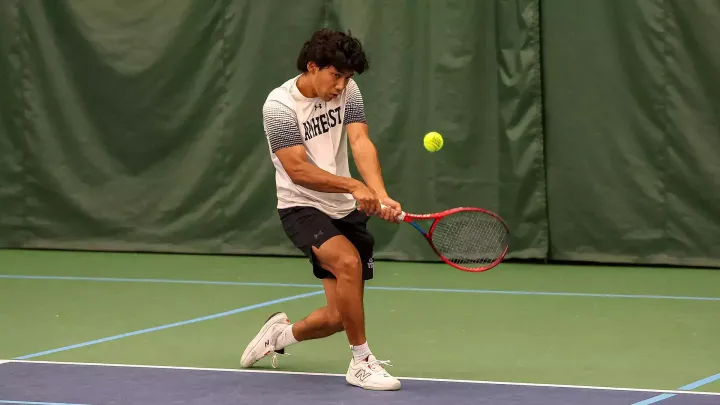Ashleigh Johnson: Stopping Goals and Sparking Change
Ashleigh Johnson, a two-time Olympic gold medal winner for U.S. water polo, has had to overcome numerous obstacles to become one of the few Black athletes in the overwhelmingly white world of water sports, Melanie Schwimmer ’23 writes.
Two-time Olympic gold medalist Ashleigh Johnson is often the center of attention in the pool, as the dominant defensive force and shot-stopping anchor of the United States women’s water polo team. This past Saturday, Sept. 18, all eyes were on Johnson once again, as she starred in the new CBS Sports docuseries, “Beyond Limits,” which spotlights elite athletes in sports where their identities are traditionally underrepresented. When Johnson made Team USA in 2016, she became the first and only Black woman to represent the U.S. in water polo, and joined a small group of Black athletes in the predominantly white world of water sports.
Johnson grew up around pools in Miami, Florida and, after taking free classes at a local gym, started playing water polo at the age of nine. She became a stand-out player from a young age for her skill and athleticism in the water. She was also often the only Black person in the swimming complex.
Recently, Johnson shared the aggressions she faced growing up. “When I was younger, I got questions from other kids in the sport, parents, and even strangers, asking questions like, ‘Can Black people float?’ or ‘Black people don’t swim, how come you know how?’” Questions like these reinforced the racist, hegemonic idea that Johnson did not belong in the pool and added additional pressure “to either act like race wasn’t something that was part of my reality or absolutely crush the expectations that people had for me.”
Opting to stay on the east coast and attend an Ivy League school, Johnson chose to play water polo at Princeton rather than join one of the Big Four teams that dominate water polo — UC Berkeley, UCLA, the University of Southern California and Stanford. At Princeton, she earned the Collegiate Water Polo Association’s Defensive Player of the Week an impressive 19 times and earned the title of 2014 Female Water Polo Player of the Year by Swimming World. Now, photos of Johnson in the cage are plastered all around the Princeton Aquatic Center, sending a clear message of what excellence in the water looks like.
After taking a semester off from school to pursue her Olympic dream, Johnson earned the starting spot on Team USA in the 2016 Olympics. In Rio, she saved 64.6 percent of all the shots she faced, an impressive average in a high-scoring sport, where save percentages generally hover around 45 percent.
This summer in Tokyo, Johnson almost exactly matched her Rio numbers with a save percentage of 64.5 percent. In the Olympic championship match, which Team USA won 14-5, she saved 11 of 15 shots she faced for a 73 percent mark, as compared to the Spanish keeper who logged a save percentage of just 19 percent. After her golden performance, Team USA Head Coach Adam Krikorian explained just how indispensable Johnson is to the team: "She just gave us a ton of confidence. When she's back there and you see that big smile of hers, it gives you the confidence but it also relaxes you a little bit and it helped to settle us in."
A leader both in and out of the pool, Johnson’s game has always maintained a two-fold mission: athletic excellence and promoting inclusion in water polo. When she is not training with Team USA or playing professionally in Greece, she runs the Johnson Sisters Swim Clinic in the Miami/Fort Lauderdale area, which aims to help teach water safety and provide pool access to all.
Known in the pool for her powerful eggbeater kick (a method of treading water), superb game vision and unparalleled shot-stopping ability, Johnson has become a star in her sport. She hopes to use this platform to “be a mirror that a young Black girl or young Black boy would look up to and see themselves in and I realized how powerful that was and how powerful that could be for someone who's coming into our sport.”



Comments ()